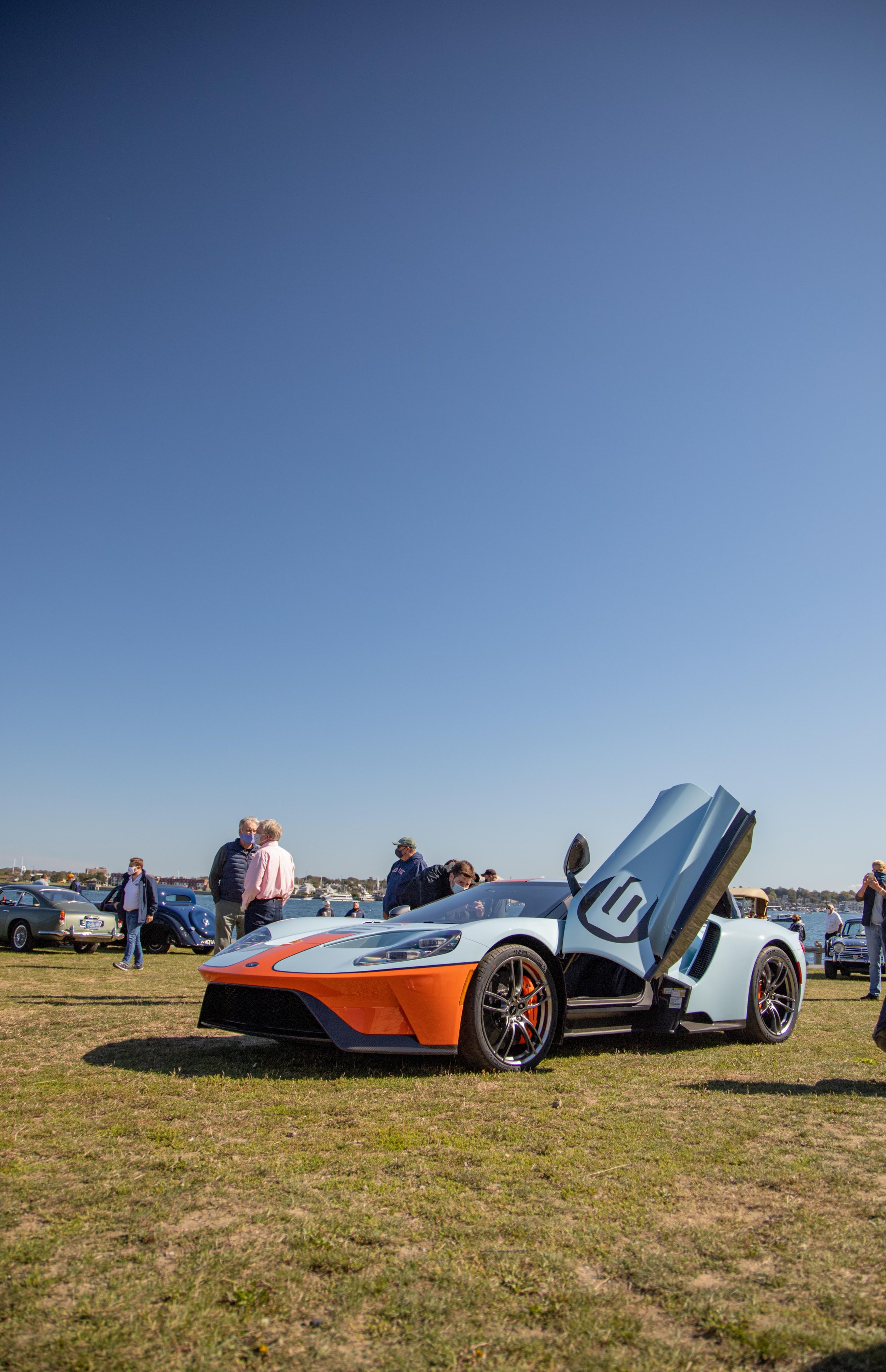2020 Ford GT
Purpose built for Le Mans, advanced aerodynamics and suspension, unique flying buttresses. Is it super?






The Ford GT is different than all modern supercars; most are built for primarily road use, then modified to race competitively. The GT is exactly the opposite, designed as a race car first and modified later for the road. The GT was announced in 2016, exactly 50 years after the GT40 finished 1,2,3 at the 24 Hours of Le Mans, and like a storybook ending, the GT won its class at Le Mans in 2016 with two other cars finishing 3rd and 4th in the class. With direct race provenance and a purpose-built design, the GT is one of the most direct and dynamic road cars introduced in the last decade.
Because the GT was designed as a racecar first, every aspect of the car’s layout was taken into consideration to maximize efficiency on the racetrack, and therefore, the chassis of the GT is the dominating aspect of the car. The original GT40 and 2005 GT both utilized V8’s, though Ford engineers deemed the 3.5 V6 Ecoboost engine much more appropriate for the new GT. Fuel economy, space limitations and weight were all factors in the decision-making process, and though many American supercar fans might prefer a V8 for sound and power reasons, the 650-horsepower twin-turbocharged V6 is a much better pairing for what the GT was built for: endurance racing. Looking at the GT, it’s easy to notice how compact the car is. The engine fits snugly between the “flying buttresses” with little room to spare. Ford aimed to build the car with as little excess material as possible, essentially molding the design around the cabin and engine compartment.
The advanced aerodynamics seen on the GT is one of the most impressive characteristics of the car. Jamal Hameedi, Chief Engineer for Ford Performance stated, “The aerodynamics were developed first, and then we picked the most efficient Eco boost engine that we could find for that package.” Like other modern supercars, the GT utilizes an active rear wing, that raises, or lowers based on speed, acceleration or deceleration. One of the most significant facets of the aerodynamics and the overall design are the flying buttresses, or support structures. These buttresses extend from behind the cabin to the rear wheel arches, significantly improving the aerodynamics and stability of the car.
On the road, the GT uses its racing backbone to its advantage, providing one of the most hardcore yet precise driving experiences in the modern supercar spectrum. The carbon fiber chassis houses two spring sources at each corner, one normal spring and damper and one torsion bar. In all modes besides track mode, the normal spring is utilized to allow the suspension to travel and increase comfort. When track mode is selected, the car drops 50mm instantly, locking out the normal spring to rely on just the damper and torsion bar. In track mode, the car drops so low that it is not road legal, increasing stiffness and minimizing body roll. The car is very easy to place on the road, often mimicking a race car more than a road car in this aspect.
As many supercars today offer several comforts, the GT is purpose built, with nothing it doesn’t need, and no space wasted. As mentioned earlier, the shape of the car was formed around the cabin and engine compartment, which are both very tight. The driver and passenger sit very close to each other, with no space in between. The seats are set in a fixed position, only the steering wheel and pedals adjust for the driver to ensure the perfect driving position.
Specifications:
Engine: 3.5 Liter V6
Horsepower: 647 @ 6250 RPM
Torque: 550 ft./lbs. @ 5900 RPM
Transmission: Seven Speed Dual Clutch Automatic
Top speed: 216 MPH
0-60 MPH: 3.0 Seconds
Weight: 3053 lbs.



















